Firebreaks help delineate the boundary of the burn unit and reduce the fuel along edge of the unit to make ignition easier. Additionally, firebreaks are used for access by personnel and equipment. Firebreaks should be to bare ground or mineral soil, yet constructed to not cause erosion problems.
Establish permanent firebreaks, remember, prescribed fire is not a one time treatment. For more information see Firebreaks for Prescribed Burning NREM-2890 at: http://pods.dasnr.okstate.edu/docushare/dsweb/Get/Document-8542/NREM-2890web.pdf
Firebreak Width
In general, the width of the firebreak on the downwind side of the area to be burned should be ten times the height of the flammable vegetation within the burn unit. Firebreaks are usually a combination of bare ground, mowed strips, and backfired or blackened strips. If the firebreak is insufficient, you may experience an escaped fire. Some recommended widths of blackened areas are:
- Grass fuels only = 100 feet
- Grass fuels with cedar = 300 feet
- Grass fuels with sand shinnery oak = 200 feet
- Grass fuels with sand sage brush = 200 feet
- Forest understory of leaf litter fuels = 50 feet
- Forest understory of leaf litter fuels with cedar = 300 feet
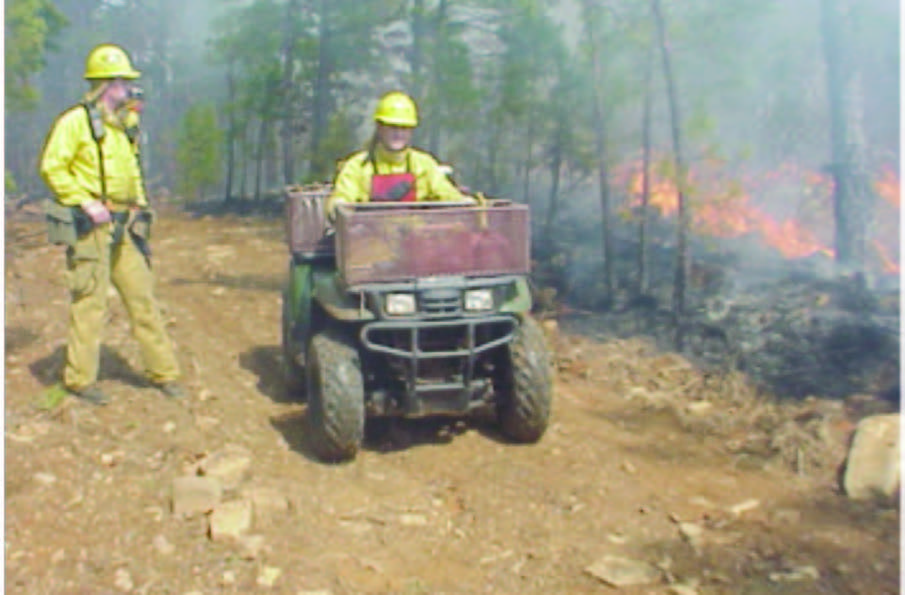
Firebreaks allow access for personnel and equipment.
Firebreak Types
Mowed Lines / Wet Lines
Require more personnel, equipment, water, and takes longer to conduct fire. They also are risky without a high level of experience.
Cattle Trails
Use mowing to reduce fuel loads next to cattle trails.
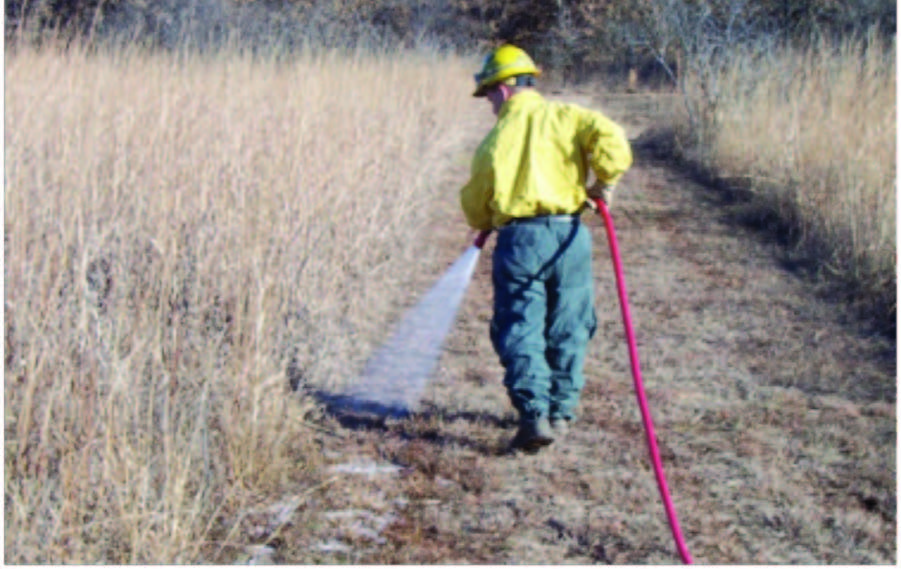
Mowed firebreak with water being applied just before ignition. The area to the left of the person is the burn unit.
Roads, paved, county, two track or feed roads
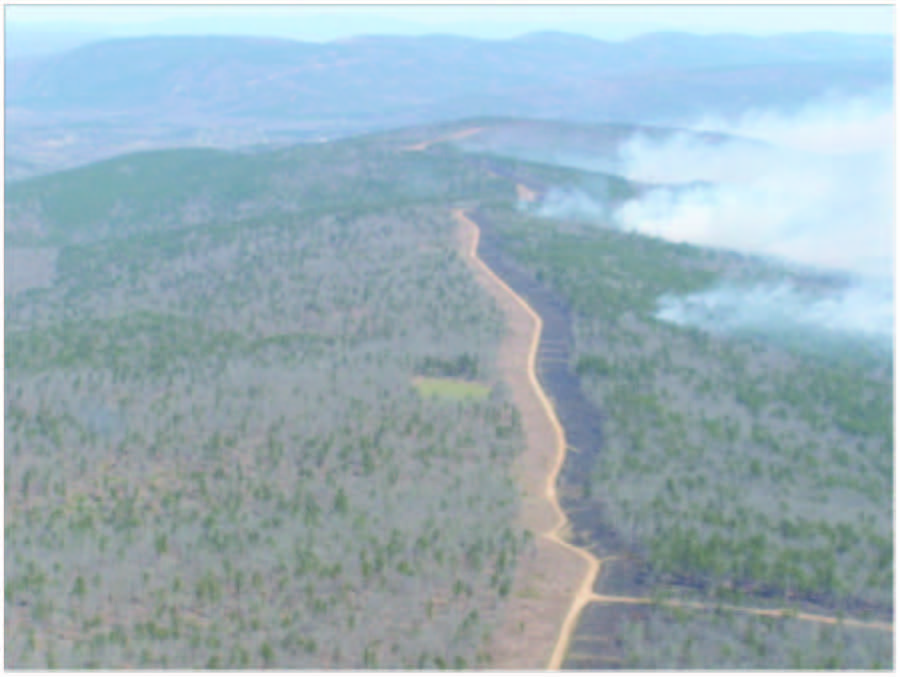
Road being used as a firebreak on this large prescribed burn.
Dozed Lines
These are scraped to mineral soil to remove fuels.

Dozed firebreaks allow for access of personnel and equipment in complex terrain.
Disked Lines
Be sure to mow and then disk the area twice to ensure there is no continuous fuel in the line.
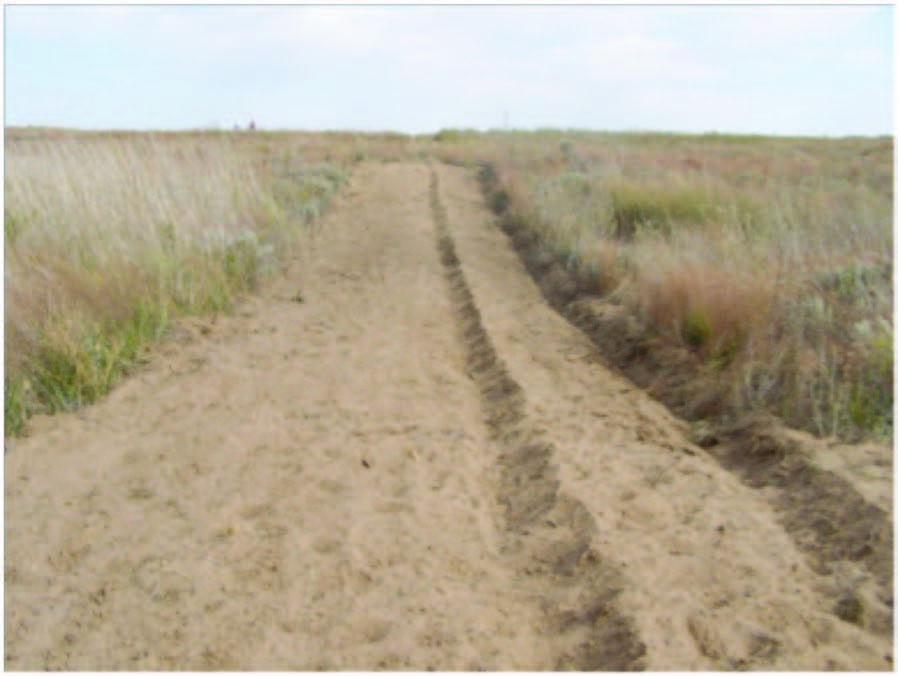
Example of well constructed disked firebreak.
Leaf blower or raked lines
These work well for short distances in forested areas where fuel levels are low.
Natural barriers
Creeks, rivers, lakes, cultivated fields, forest edges can be used to minimize cost, effort and erosion potential.
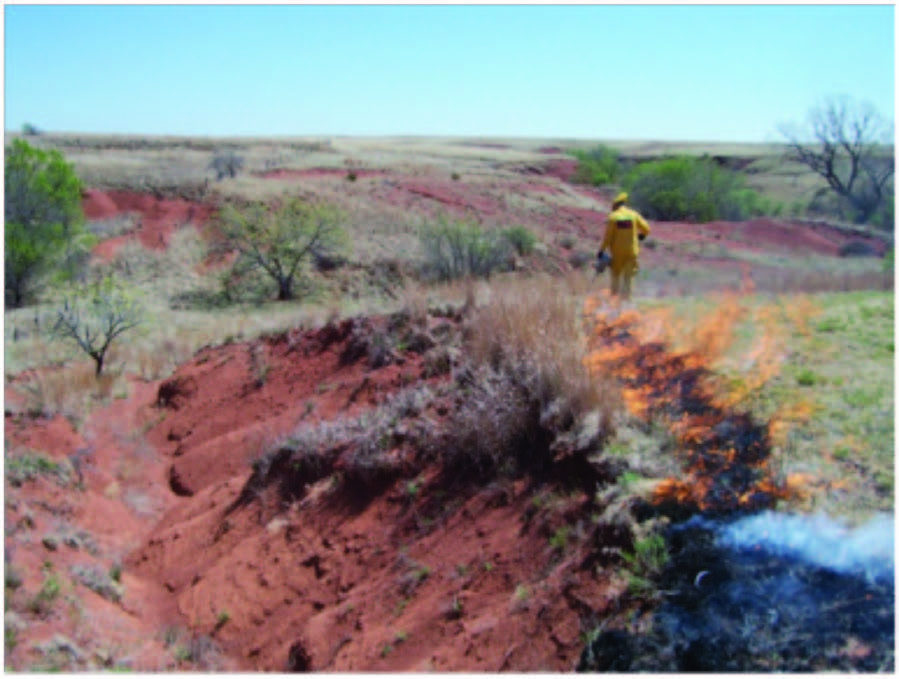
If using a draw or canyon as a firebreak, make sure that the fire cannot get across the firebreak. Always inspect the entire perimeter of the burn unit prior to ignition.